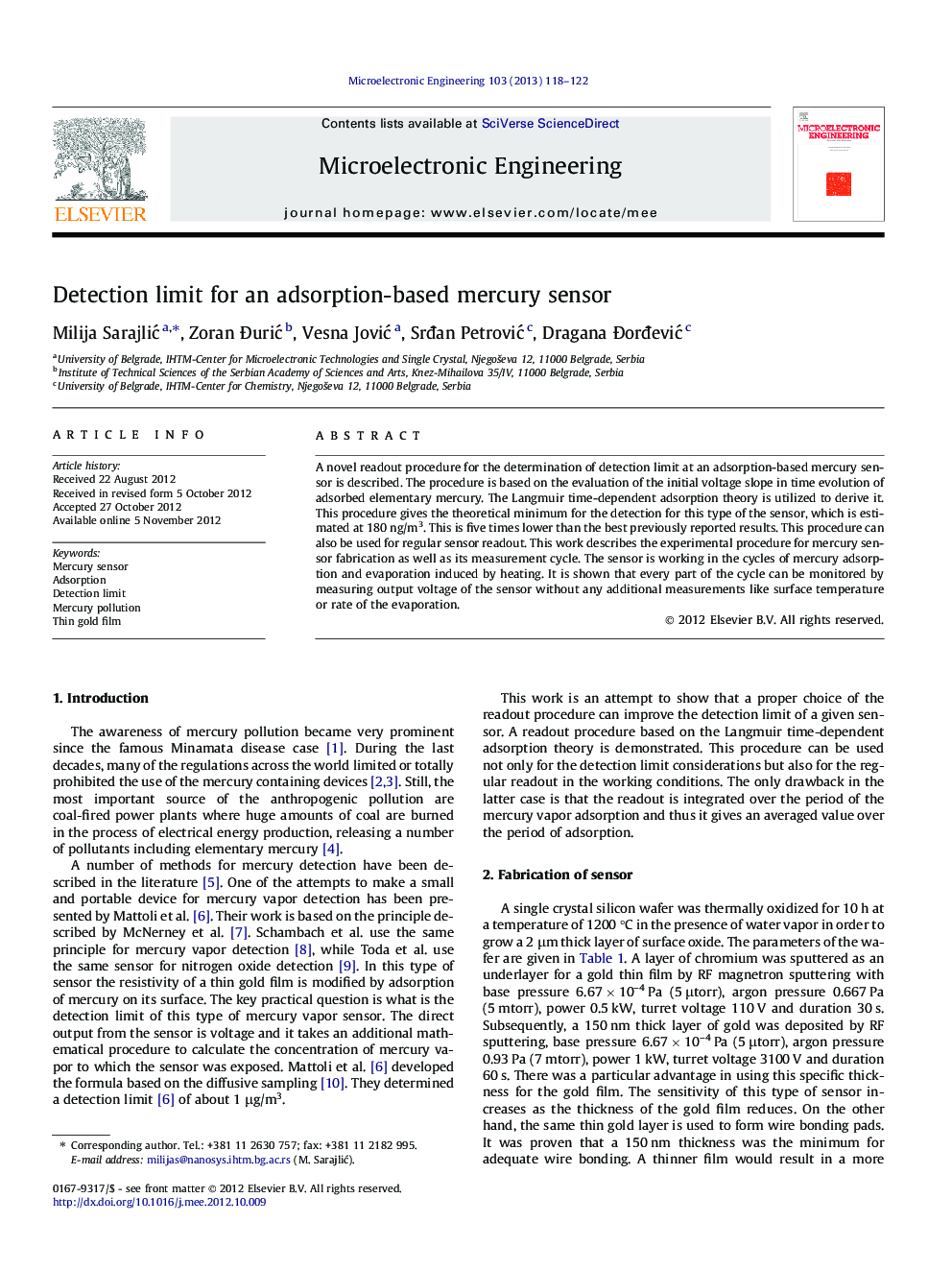| Article ID | Journal | Published Year | Pages | File Type |
|---|---|---|---|---|
| 542953 | Microelectronic Engineering | 2013 | 5 Pages |
A novel readout procedure for the determination of detection limit at an adsorption-based mercury sensor is described. The procedure is based on the evaluation of the initial voltage slope in time evolution of adsorbed elementary mercury. The Langmuir time-dependent adsorption theory is utilized to derive it. This procedure gives the theoretical minimum for the detection for this type of the sensor, which is estimated at 180 ng/m3. This is five times lower than the best previously reported results. This procedure can also be used for regular sensor readout. This work describes the experimental procedure for mercury sensor fabrication as well as its measurement cycle. The sensor is working in the cycles of mercury adsorption and evaporation induced by heating. It is shown that every part of the cycle can be monitored by measuring output voltage of the sensor without any additional measurements like surface temperature or rate of the evaporation.
Graphical abstractFigure optionsDownload full-size imageDownload as PowerPoint slideHighlights► The gas mercury sensor based on the Au thin film structure is fabricated. ► A new readout procedure based on the Langmuir adsorption theory is introduced. ► Relationship between the sensor bias slope and the mercury concentration is linear. ► From the noise measurements detection limit is estimated at 180 ng/m3.
